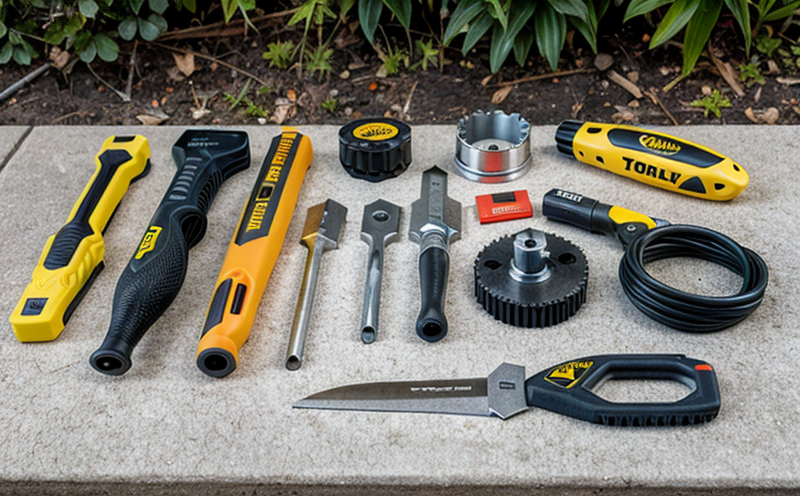Dust Ingress Testing of Hardware Equipment
The need to ensure product safety and durability is paramount in consumer electronics and hardware manufacturing. Dust ingress testing plays a critical role in safeguarding products from potential hazards that could compromise their performance or functionality over time.
Dust ingress into hardware equipment can lead to several issues, including overheating, short circuits, and even complete failure of the device. This can result in product recalls, legal issues, and loss of consumer trust. Compliance with international standards such as ISO 12269:2007 is essential to ensure that products meet safety and performance expectations.
The testing process involves exposing the hardware equipment to controlled dust environments, simulating real-world conditions where dust accumulation might occur. The specimens are then inspected for any signs of damage or dysfunction due to ingress. This includes checking for electrical shorts, physical damage, and other indicators of dust-related issues.
Proper specimen preparation is critical in this process. The hardware equipment must be cleaned thoroughly using appropriate methods before testing begins. This ensures that the test accurately reflects the potential impact of dust ingress rather than any pre-existing dirt or debris on the surface of the product.
The methodology for dust ingress testing typically involves placing the hardware equipment into a chamber where it is exposed to controlled levels of airborne particles. The duration and intensity of exposure depend on the specific requirements set by the standard being adhered to. For instance, ISO 12269:2007 specifies certain criteria that must be met during the testing process.
After the test period has concluded, the hardware equipment is thoroughly inspected for any signs of damage or malfunction. This inspection typically involves visual examination as well as functional tests to ensure that all components are working correctly and there have been no adverse effects from the dust exposure.
The results of this testing provide valuable insights into how well a particular piece of hardware can withstand environmental challenges, particularly those related to dust accumulation. These findings help manufacturers make informed decisions about design modifications or material selection for future products.
Understanding and implementing effective dust ingress testing early in the development cycle allows companies to identify potential problems before they become costly issues during production or post-launch. By adhering strictly to recognized standards like ISO 12269:2007, firms can ensure their products meet safety requirements while also enhancing overall product quality.
Compliance with these standards not only protects consumers but also helps maintain a positive brand image and customer trust. It ensures that companies are meeting both legal obligations and ethical responsibilities towards their end-users.
Scope and Methodology
- Dust Exposures: Controlled exposure to varying levels of dust particles designed to simulate real-world conditions.
- Specimen Preparation: Thorough cleaning of the hardware equipment prior to testing.
- Environmental Chambers: Use of specially designed chambers that can maintain consistent humidity and temperature levels during testing.
- Inspection Procedures: Comprehensive inspection including visual examination and functional tests after exposure.
The scope of dust ingress testing is broad, covering various types of hardware equipment commonly found in consumer electronics. It ensures that products are robust enough to handle everyday environmental stresses without compromising safety or performance. The methodology employed adheres strictly to international standards such as ISO 12269:2007 which provides detailed guidelines on how these tests should be conducted.
By following this rigorous approach, manufacturers can gain valuable insights into their product's durability and reliability under different environmental conditions. This information is crucial for continuous improvement of existing products and development of new ones that meet or exceed industry expectations.
Industry Applications
- Consumer Electronics: Ensuring the longevity of electronic devices by preventing dust from causing shorts or overheating issues.
- Automotive Components: Protecting sensitive components within vehicles such as onboard computers and sensors from dirt and debris.
- Industrial Machinery: Preventing damage to critical parts like gears and bearings which could lead to costly downtime and maintenance costs.
- Battery Packs: Ensuring that batteries remain safe and effective even when exposed to dust particles during use or storage.
Dust ingress testing finds application across multiple industries, particularly those dealing with sensitive electronic components. In consumer electronics, it ensures the reliability of devices over extended periods, preventing failures caused by dirt accumulation. For automotive manufacturers, this type of testing helps protect onboard systems from environmental contaminants that could otherwise degrade performance or cause malfunctions.
In industrial settings where machinery operates in harsh environments, dust ingress testing ensures critical components remain functional and safe. Similarly, for battery manufacturers, it guarantees the integrity of cells even after prolonged exposure to dusty conditions either during production or while being stored.
Overall, dust ingress testing is an essential part of quality assurance processes across many sectors, ensuring that products maintain their intended functionality throughout their lifecycle despite inevitable environmental exposures.
Competitive Advantage and Market Impact
Adopting a robust dust ingress testing protocol offers significant competitive advantages in today’s highly competitive market. By ensuring product reliability under all conditions, companies can differentiate themselves from competitors who may not implement such stringent measures early enough in the design phase.
From a consumer perspective, products that pass rigorous dust ingress tests are perceived as safer and more durable, leading to increased customer satisfaction and loyalty. For businesses, this translates into reduced warranty claims, lower maintenance costs, and enhanced reputation among stakeholders.
The market impact of adhering strictly to standards like ISO 12269:2007 cannot be overstated. Compliance not only aligns with regulatory requirements but also sets a benchmark for excellence within the industry. Companies that consistently meet these high standards are more likely to attract investment and partnerships, further solidifying their position as leaders in innovation and quality.
Moreover, by continuously improving testing methods and incorporating feedback from rigorous evaluations, manufacturers can stay ahead of emerging trends and technologies. This proactive approach fosters a culture of excellence within organizations, driving overall industry progress towards more sustainable practices.





